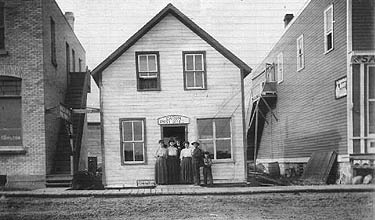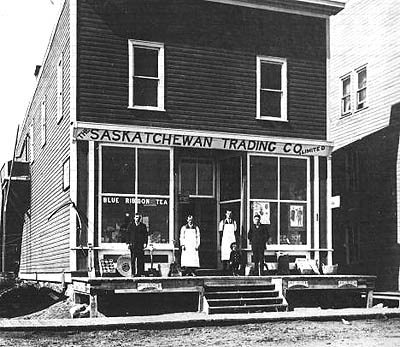 In 1901, Caron had a post office (see left). Records from Canada Post have the Caron Post Office opening November 1, 1884. It also had: one small store, one small boarding house and 2 elevators, but it soon became a major trading area. Grain was brought great distances. In the early years it was bagged into bushel bags. It was a common sight to see them stacked by the thousands beside the track, waiting for a grain car. By 1906 it was possible for grain to be hauled loose and wagons loaded with grain came to Caron from as far away as Gravelburg. 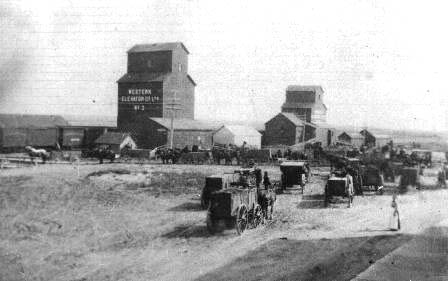 Caron had a population of 78 residents, when in November of 1903, they informed the Commissioner of Public Works of their desire to become a village. In January of 1904, an order was passed, establishing the Village of Caron. The area continued to increase in population as more people "came west" - mostly from Ontario and Quebec, but also many who had immigrated to Canada from the U.S. and from "across the sea" (mainly from Scotland and England). 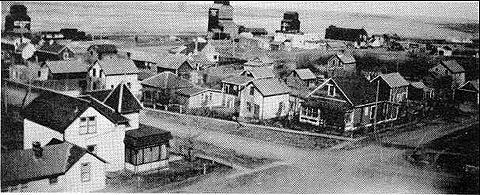 Caron had grown by 1905, and now there were 2 general stores, a hardware store, a harness shop, 2 lumber yards, a blacksmith shop, a furniture store, barbershop, 2 livery and feed barns, one hotel, a butcher shop, a boarding house, one flour and feed store, and 3 elevators, as well as the Post Office. A 24 x 50 school had 30 pupils. The next year a Bank of Hamilton branch was opened. 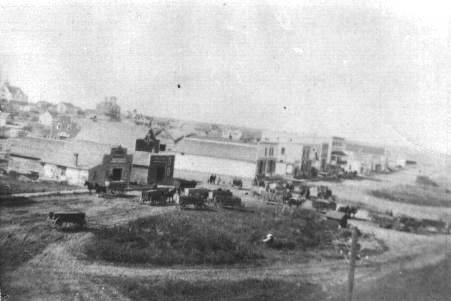 On July 1, 1906, the special act to incorporate the Town of Caron received 3rd reading. On July 16, 1906, Caron became a town. The first meeting of the Town of Caron Council took place August 13, 1906. 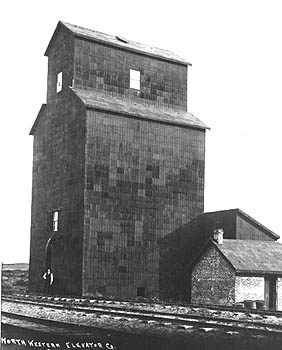 Telephone service was available in 1909 and the Telephone Exchange opened in 1911. Doctors came, churches were built, and more businesses sprang up. Laundries, cafes, implement dealerships, garages, and more elevators were built. Lodges, clubs and organizations thrived. Curling was the popular winter pastime. Each July 12th, an Orangeman's Day Parade and a picnic followed by dancing were the highlights of the summer. Electricity came to Caron on September 1, 1930. In the 30's the first #1 Highway came west from Moose Jaw to Caron. Over the years several major fires (January 31, 1907; 1910; October, 1911; January, 1914; February 24, 1915; July 12, 1915), the depression, improved transportation and population trends reduced Caron from a town to a village, and gradually the Rural Municipality took over the administration. Natural Gas came into Caron in 1958, and in 1962 our Automatic Telephone Exchange went into service. A water system was installed in 1963 and the majority of homes became "modern". One by one, the "outdoor biffies" disappeared. Caron became an
Organized Hamlet in 1978. By that time the
last two businesses were gone. The garage
closed when the owner retired in 1971 and the
store burned in May 1976, one week after it
had been sold
|

